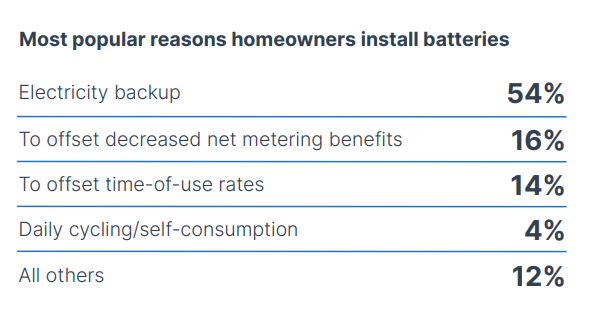Finance
Legislature’s Joint Finance Committee approves 4 reading curriculums under Act 20
Editor’s note: With low reading proficiency scores across the state, USA TODAY NETWORK-Wisconsin is exploring the causes and consequences of low literacy. This article is part of the By the Book series, which examines reading curriculum, instructional methods and solutions in K-12 education to answer the questions: Why do so many Wisconsin kids struggle to read, and what can be done about it?
To read other stories in the series, click here.
Wisconsin’s Joint Committee on Finance approved Monday a list of four reading curricula schools can adopt to be in compliance with the state’s new reading law, Act 20. The curricula approved are those recommended by the state’s Early Literacy Curriculum Council, a nine-member council created to specifically evaluate K-3 reading curriculums for their compliance with Act 20.
The four curricula approved are:
- Core Knowledge Language Arts K-3
- Our EL Education Language Arts
- Wit and Wisdom with Pk-3 Reading Curriculum
- Bookworms Reading and Writing K-3
Act 20, signed into law last summer, requires curriculum to be backed by the “science of reading”: a decades-old body of research that explains how the brain learns to read. It includes an emphasis on phonics, which teaches students the sounds letters make and how those sounds combine in predictable patterns to form words.
The law’s changes are aimed at improving reading proficiency in the state, which has been low for years. Fewer than half of students at the state’s five largest school districts are considered proficient in reading, according to state exam scores since 2018.
Part of the law’s revamping of reading instruction requires schools to use specific instructional methods that are systemic and explicit by next school year. This instruction must include fluency, phonological awareness, phonemic awareness, phonics, oral language development, vocabulary, writing, comprehension and building background knowledge.
The list of approved curricula is significant because school districts that adopt one of them can receive reimbursement for up to half the cost, which can be millions of dollars. Many districts will be turning to this list as they redefine how they teach reading.
Committee Democrats, DPI worry list will open state up to litigation
This list was approved 10-4 along party lines with all Republicans on the committee voting in favor and no Democratic support. While Republicans were in favor of the four curricula recommended by the Early Literacy Curriculum Council, Democrats wanted to approve the Department of Public Instruction’s broader list.
In February, the Early Literacy Curriculum Council released its list of four recommended curricula. About 30 curriculum vendors submitted materials for evaluation by the council, and by February, it had reviewed about half, according to a memo from the Legislative Fiscal Bureau.
Given how much time curriculum review requires and the swift deadlines in Act 20, the council didn’t have enough time to review all the submitted curricula, the bureau’s memo said.
DPI, the state’s education agency, did its own evaluation of all the curricula, recommending 11. It rejected one of the council’s recommendations (Bookworms Reading & Writing for K-3) and added others that the council hadn’t rated.
More on Act 20: Wisconsin Department of Public Instruction asks lawmakers to change deadline for implementing part of Wisconsin’s new literacy law
In a letter to the Joint Committee on Finance, the DPI said the council’s process for evaluating curricula had exposed the state to “an unacceptable level of risk.”
Because not all vendors who submitted curriculum materials were evaluated by the council, one that wasn’t evaluated could sue, according to the Legislative Fiscal Bureau.
Democrats on the Joint Committee on Finance said that was reason enough to go with DPI’s recommendations. However, Republicans saw that as weak argument, opting for the four curricula from the Early Literacy Curriculum Council.
“This council, they’re experts. This is what they do,” said. Sen. Duey Stroebel during the committee meeting. “And I’m sorry I’m not going to look to DPI as, my god, the only people in the world who can pick the correct curriculum.”
He said the committee shouldn’t “water down, not give our kids the best quality curriculum” because of a “far-fetched legal theory.”
More on Act 20: Wisconsin passed a landmark literacy law 3 months ago. So what happens next?
The committee’s move is a “missed opportunity,” said state Superintendent Jill Underly in a media release.
“The DPI’s list of high-quality materials is robust, offers more support and flexibility, meets the definition of science-based early literacy detailed in Act 20 and mirrors materials recommended by other states undergoing similar changes,” Underly said.
The Early Literacy Curriculum Council is required to annually recommend science-based K-3 reading curricula, so Monday’s list is subject to expansion next year.
Why does the list of curricula matter?
Districts aren’t required to adopt the approved curricula, but those will be the only ones eligible for partial reimbursement — a large incentive for districts, given the cost of curriculum adoption.
Many districts will likely make the switch to new reading curriculum, if not the four approved Monday. In the past, DPI has recommended that districts use curricula positively rated by a third-party curriculum evaluation organization called EdReports.
At least 79% of school districts surveyed by the Department of Public Instruction in 2021 said they use a curriculum that is either not rated or is negatively rated by EdReports. About 80% of school districts participated in the survey.
Districts have been waiting for the release of curricula so they can adopt new practices, train their staff and be in compliance with Act 20 by the 2024-25 school year. The Green Bay School District, for example, has been waiting for the literacy council and DPI to release its curriculum list before it buys new reading curriculum. It plans to select something for grades kindergarten through eight in March.
Danielle DuClos is a Report for America corps member who covers K-12 education for the Green Bay Press-Gazette. Contact her at dduclos@gannett.com. Follow on Twitter @danielle_duclos. You can directly support her work with a tax-deductible donation at GreenBayPressGazette.com/RFA or by check made out to The GroundTruth Project with subject line Report for America Green Bay Press Gazette Campaign. Address: The GroundTruth Project, Lockbox Services, 9450 SW Gemini Drive, PMB 46837, Beaverton, Oregon 97008-7105.

Finance
Trends in residential solar finance, equipment and maintenance

Solar informational site SolarReviews released its annual survey, sharing results gathered from a group mostly represented by residential solar installers, as well as commercial installers, equipment providers, and utility-scale installers. SolarReviews operates a Solar Calculator that enables prospective customers to have a snapshot of the benefits of adding solar to their roof based on customized data for their area.
Finance
With higher financing costs industry-wide, 54% of U.S. installers said customers were less likely to take a solar loan over the past year, while cash deals are up. About 49% of sales reported were cash deals, while 41% were loans. HELOC, PACE loans, power purchase agreements, and leases combined for 10% of reported solar sales.
The top financing providers used were Credithuman (15%), Mosaic (14%), Sunlight Financial (9%),Dividend (8%), and Clean Energy Credit Union (8%).
Typical loans for loaned systems varied widely depending on whether dealer fees were assigned. Average terms are seen below.
Heightened cost of finance has pressed the residential solar industry. About half (49%) of installers said demand went down in 2023 versus 2022.
In California, where rates paid for exporting solar production to the grid were slashed by about 80%, about 69% of installers reported lower sales in California in 2023 versus 2022. However, 68% of installers reported including battery energy storage with their solar installation, about double the national average. Installers report a median payback period of eight years for solar systems with a battery, while standalone solar systems have a longer median payback period of about 10 years.
California was not the only state to cut rates for solar exports, a process known as net metering. Georgia, Arizona, Kansas, Arkansas, and Wisconsin all noted an increase in installed systems not tied to a net metering agreement.
Top products
As for the top equipment brands in residential solar, SolarReviews surveyed installers based on five criteria of performance and quality, brand name reputation, product warranty, pricing, and product availability from distributors. Based on the five criteria, SolarReviews listed Qcells as the top performing panel brand.
Installers said the top five most-used panels were Qcells (53%), REC (41%), Canadian Solar (35%), Mission Solar (29%), and JinkoSolar (20%). About 19% of solar installers offer one panel brand, while the majority provide alternative options to meet the needs of their customers.
For inverters, the top five most-used were Enphase (62%), SolarEdge (43%), SMA (23%), Sol-Ark (21%), and Tesla (21%). Tesla made a notable leap up into the top five, gaining a larger market share than Fronius and Generac.
Enphase was also listed as the most commonly used battery energy storage provider, offered by 46% of installers. This was followed by Tesla (42%), SolarEdge (35%), FranklinWH (29%), and Fortress Power (18%). A sizeable market share was also held by SunPower, Generac, LG Energy Solution, and HomeGrid.

Maintenance
Given that solar is often a 25-year investment, post-installation services are a critical feature in a solar agreement. About 96% of installers have access to system monitoring, while 63% said they proactively check their customers’ installations at least once per quarter to ensure they are working.
The most common reasons for service, in order, were inverter hardware failures and replacement, inverter software and setup issues, battery software updates, communications and monitoring fixes, roof leaks, battery hardware failure or replacement, wiring issues, and broken or underperforming panels.
“Fortunately, when issues do occur, they are often covered by some type of warranty, leaving only 15% of cases where the customer is responsible for repair costs,” said SolarReviews.

Outlook
The residential solar industry looks to recover from a rocky 2023, where growth was slowed by high finance costs and unfavorable policy changes like the reduction of net metering rates.
“Some solar businesses are still reeling from the events of 2023. 22% of solar businesses say they have concerns that make them unsure whether they can stay in business in the coming six months,” said SolarReviews.
Despite this uncertainty, residential solar installers appear to have a good outlook for 2024. About 54% of surveyed installers said they expect to sell more solar in 2024, and an additional 23% said they think they will be able to maintain the same level of business next year.
Notably, surveyed installers listed pv magazine as the top trusted media platform for solar news and analysis, with 52% responding we are the preferred source. The marks the second year in a row as the most-trusted media source. We thank you for your continued readership.
This content is protected by copyright and may not be reused. If you want to cooperate with us and would like to reuse some of our content, please contact: editors@pv-magazine.com.
Finance
Crow Wing County is nationally recognized for financial reporting

BRAINERD — For the 10th consecutive year, Crow Wing County was awarded the Certificate of Achievement for Excellence in Financial Reporting and the Award for Outstanding Achievement in Popular Financial Reporting.
The Certificate of Achievement is the highest form of recognition in the area of governmental and financial reporting. The honor is given out by the Government Finance Officers Association of the United States and Canada.
The Certificate for Excellence in Financial Reporting was awarded to Crow Wing County for its 2022 Comprehensive Annual Financial Report compiled in 2023.
The award represents a significant accomplishment by a government and its management, the county noted in a news release.
“This is a testament to the type of work that is being done in our Finance Department,” said Finance Director Nancy Malecha. “This award recognizes our commitment in ensuring that our financial data and information is reported accurately, timely and provides transparency that the taxpayers of Crow Wing County deserve.”
Crow Wing County is one of only 16 counties in Minnesota to have earned this award.
The Award for Outstanding Achievement in Popular Financial Reporting was awarded to Crow Wing County for its 2022 Popular Annual Financial Report.
The annual report extracts information from the Comprehensive Annual Financial Report and summarizes the financial position of the county in a simple, easy to read format. Crow Wing County is one of five counties in Minnesota that have received the national award.
Financial reports are available on the Crow Wing County website at
www.crowwing.gov/771/Financial-Statements
.
Finance
Tata Motors’ subsidiaries – TPEM and TMPV join hands with Bajaj Finance, offers financing program for authorized passenger and electric vehicle dealers – Tata Motors

Press release -
May 20, 2024
Tata Motors’ subsidiaries – TPEM and TMPV join hands with Bajaj Finance, offers financing program for authorized passenger and electric vehicle dealers
Tata Motors Passenger Vehicles (TMPV) and Tata Passenger Electric Mobility (TPEM) join hands with Bajaj Finance to offer financing program for authorized passenger and electric vehicle dealers. In the image, Mr. Dhiman Gupta, Chief Financial Officer, Tata Passenger Electric Mobility Ltd. and Director, Tata Motors Passenger Vehicles Ltd. and Mr. Siddhartha Bhatt, Chief Business Officer, Bajaj Finance Ltd. at the MoU signing in Mumbai.
In a bid to improve options and ease of financing for the dealers, Tata Motors Passenger Vehicles (TMPV) and Tata Passenger Electric Mobility (TPEM) – subsidiaries of Tata Motors, India’s leading automotive manufacturer, have joined hands with Bajaj Finance, part of Bajaj Finserv Ltd., one of India’s leading and most diversified financial services groups, to extend supply chain finance solutions to its passenger and electric vehicle dealers. Through this memorandum of understanding (MoU), the participating companies will come together to leverage Bajaj Finance’s wide reach to help dealers of TMPV and TPEM access funding with minimal collateral.
The MoU for this partnership was signed by Mr. Dhiman Gupta, Chief Financial Officer, Tata Passenger Electric Mobility Ltd. and Director, Tata Motors Passenger Vehicles Ltd. and Mr. Siddhartha Bhatt, Chief Business Officer, Bajaj Finance Ltd.
Commenting on the partnership, Mr. Dhiman Gupta, Chief Financial Officer, Tata Passenger Electric Mobility Ltd. and Director, Tata Motors Passenger Vehicles Ltd., said, “Our dealer partners are integral to our business, and we are happy to actively work towards solutions to help them in ease of doing business. Together, we aim to further grow the market and offer our New Forever portfolio to an increasing set of customers. To that effect, we are excited to partner with Bajaj Finance for this financing program, which will further strengthen the access of our dealer partners to increased working capital.”
Speaking on this partnership, Mr. Anup Saha, Deputy Managing Director, Bajaj Finance Ltd, said, “At Bajaj Finance, we have always strived to provide best-in-class processes by using the India stack for financing solutions that empower both individuals and businesses. Through this financing program, we will arm TMPV and TPEM’s authorized passenger and electric vehicle dealers with financial capital, which will enable them to seize the opportunities offered by a growing passenger vehicles market. We are confident that this collaboration will not only benefit dealers but also contribute to, and enhance the growth of, the automotive industry in India.”
TMPV and TPEM have been pioneering the Indian automotive market with its groundbreaking efforts it both ICE and EV segments. The company’s overarching New Forever philosophy has led to the introduction of segment leading products which are being appreciated by consumers at large.
Bajaj Finance is one of the most diversified NBFCs in India with presence across lending, deposits and payments, serving over 83.64 million customers. As of March 31, 2024, the company’s assets under management stood at ₹3,30,615 crore.
Media Contact Information: Tata Motors Corporate Communications: [email protected] / 91 22-66657613 / www.tatamotors.com
-

 News1 week ago
News1 week agoSkeletal remains found almost 40 years ago identified as woman who disappeared in 1968
-

 World1 week ago
World1 week agoIndia Lok Sabha election 2024 Phase 4: Who votes and what’s at stake?
-

 Movie Reviews1 week ago
Movie Reviews1 week ago“Kingdom of the Planet of the Apes”: Disney's New Kingdom is Far From Magical (Movie Review)
-

 World1 week ago
World1 week agoUkraine’s military chief admits ‘difficult situation’ in Kharkiv region
-

 Politics1 week ago
Politics1 week agoTales from the trail: The blue states Trump eyes to turn red in November
-

 World1 week ago
World1 week agoBorrell: Spain, Ireland and others could recognise Palestine on 21 May
-

 World1 week ago
World1 week agoCatalans vote in crucial regional election for the separatist movement
-

 Politics1 week ago
Politics1 week agoNorth Dakota gov, former presidential candidate Doug Burgum front and center at Trump New Jersey rally


















